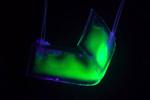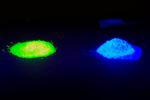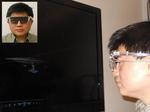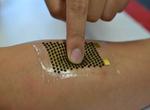Other

“By doping alumina crystals with neodymium ions, engineers at the University of California San Diego have developed a new laser material that is capable of emitting ultra-short, high-power pulses—a combination that could potentially yield smaller, more powerful lasers with …

“A team led by the University of California San Diego has developed a chip that can detect a type of genetic mutation known as a single nucleotide polymorphism (SNP) and wirelessly send the results in real time to a smartphone …

“An innovative, eel-like robot developed by engineers and marine biologists at the University of California can swim silently in salt water without an electric motor. Instead, the robot uses artificial muscles filled with water to propel itself. The foot-long robot …

“A team of California researchers has developed a robotic gripper that combines the adhesive properties of gecko toes and the adaptability of air-powered soft robots to grasp a much wider variety of objects than the state of the art. Researchers …

“Engineers at the University of California San Diego have developed a miniature, ultra-low power injectable biosensor that could be used for continuous, long-term alcohol monitoring. The chip is small enough to be implanted in the body just beneath the surface …

“Researchers have developed a stretchable, flexible patch that could make it easier to perform ultrasound imaging on odd-shaped structures, such as engine parts, turbines, reactor pipe elbows and railroad tracks—objects that are difficult to examine using conventional ultrasound equipment …
News Supercomputers aid discovery of new, inexpensive material to make LEDs with excellent color quality

“A team led by engineers at the University of California San Diego has used data mining and computational tools to discover a new phosphor material for white LEDs that is inexpensive and easy to make. Researchers built prototype white LED …

“A team of researchers at UC San Diego and San Diego State University has developed a pair of “4-D goggles” that allows wearers to be physically “touched” by a movie when they see a looming object on the screen, such …

“Electrical engineers at the University of California San Diego have developed a faster collision detection algorithm that uses machine learning to help robots avoid moving objects and weave through complex, rapidly changing environments in real time. The algorithm, dubbed “Fastron …

“A team of engineers has developed stretchable fuel cells that extract energy from sweat and are capable of powering electronics, such as LEDs and Bluetooth radios. The biofuel cells generate 10 times more power per surface area than any existing …
